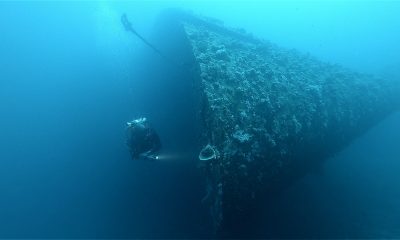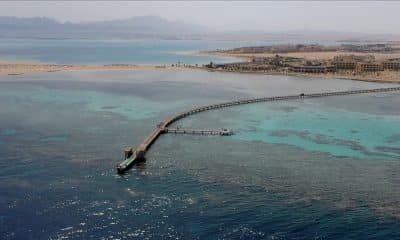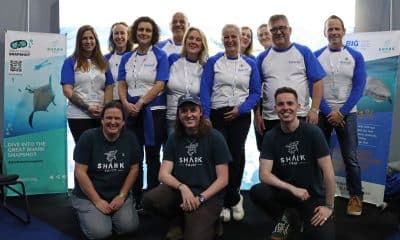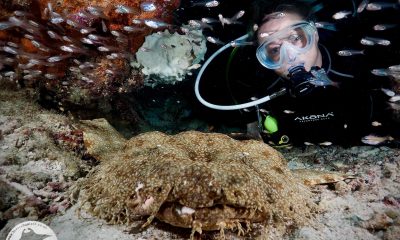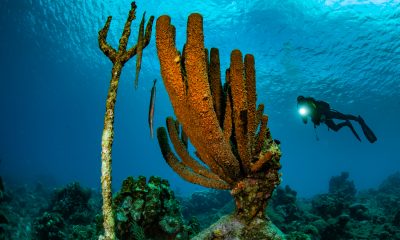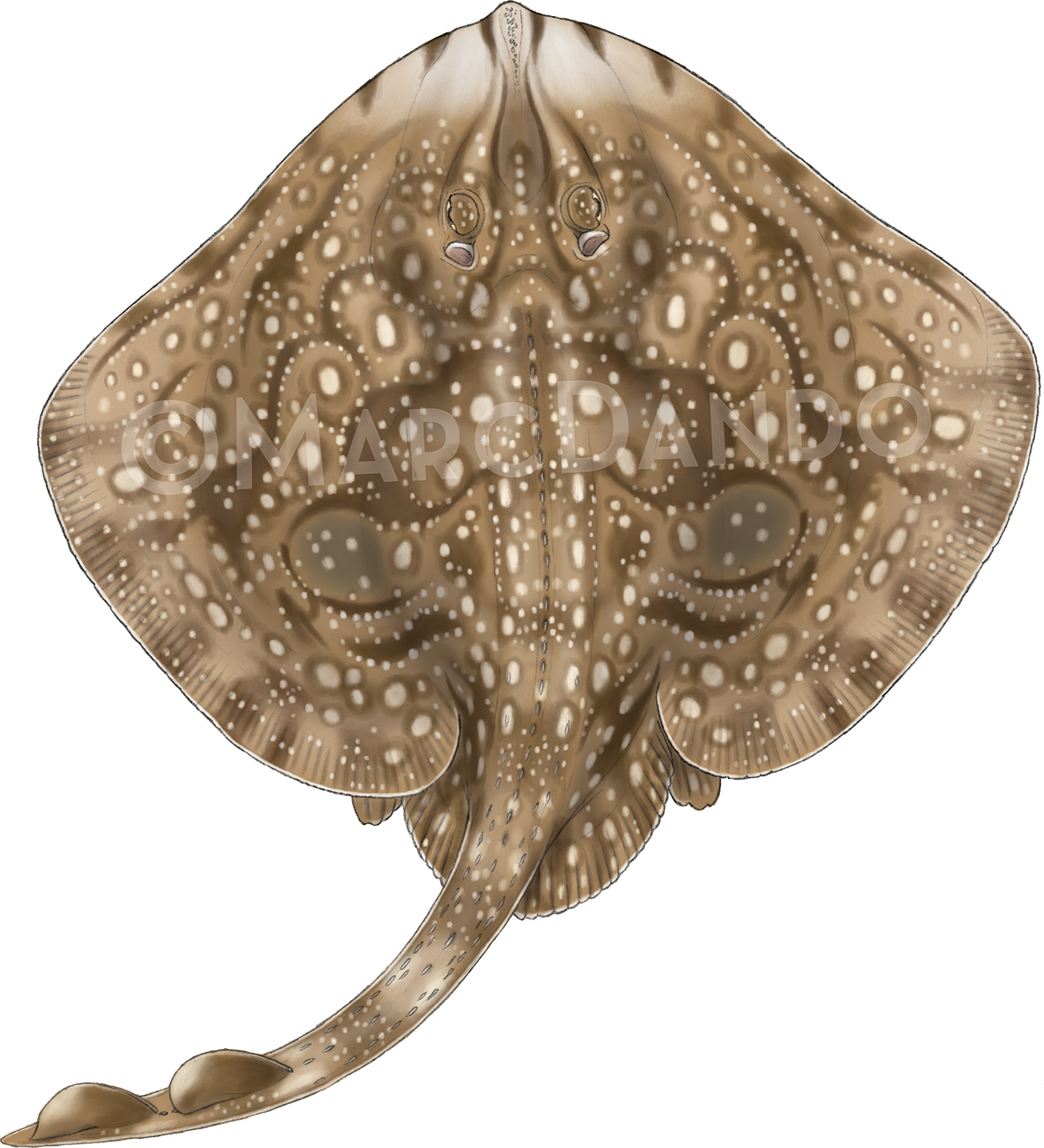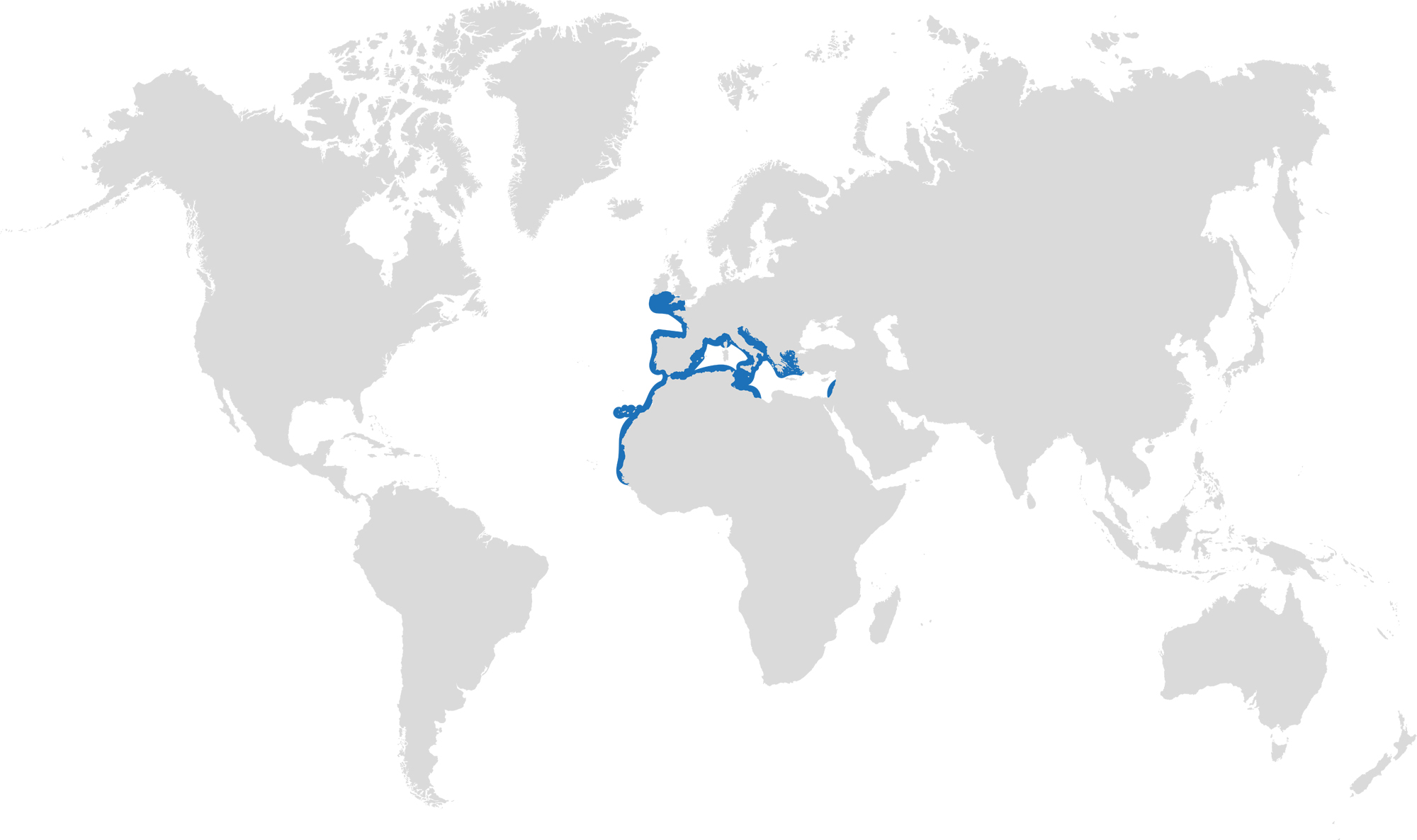Marine Life & Conservation Blogs
Bluefin Tuna Back in UK Waters
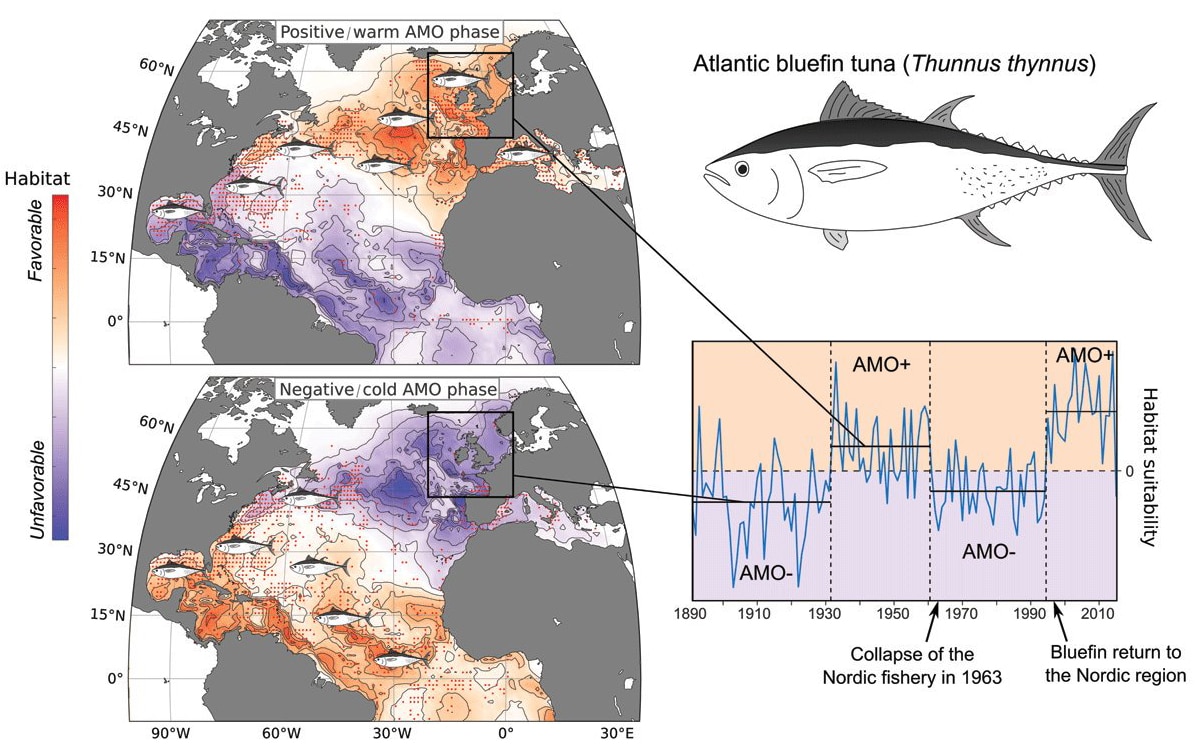
Bluefin Tuna are back in the seas around the UK after decades of decline and absence. It has been proposed this could be due to warming seas rather than species recovery. After generations of overfishing, pollution and lack of food, it is astonishing how resilient these Tuna and other species are in their survival and wondrous that they should be able to return at all. What is not so wondrous is human nature. The Angling Trust are now petitioning for the protection status for these fish to be changed to establish a catch and release licensed fishery in what seems to me to be a case of self gratification and financial profit over sensible environmental concern.
New research by Dr Robin Faillettaz from the University of Lille (France), his French co-workers Drs Gregory Beaugrand and Eric Goberville, and Dr Richard Kirby from the UK – as part of the scientific programme CLIMIBIO (www.climibio.univ-lille.fr/) – has revealed that warmer seas can explain the reappearance of tuna around the UK.
Dr Richard Kirby says “Bluefin tuna have been extensively overfished during the 20th century and the stock was close to its lowest in 1990, a fact that further indicates the recent changes in distribution are most likely environmentally driven rather than due to fisheries management and stock recovery. Before we further exploit bluefin tuna either commercially or recreationally for sport fishing, we should consider whether it would be better to protect them by making the UK’s seas a safe space for one of the ocean’s most endangered top fish.”
I asked him for more information and he sent me the following report:
“Bluefin tuna are back in the sea around the UK after decades of absence and a new study says that warming seas can explain why. Bluefin tuna are one of the biggest, most valuable, most sought after, and most endangered fish in the oceans. Sport fishermen excited at the prospect of catching a fish that can grow to over 900kg have already launched a UK campaign to allow recreational fishing for one of game fishing’s top targets. But should we catch and exploit this endangered species or should we make UK waters a safe space for this incredible fish? Important questions to answer are why has this endangered fish suddenly returned to the UK after an absence of nearly 40 years and are bluefin tuna now more abundant or have they just changed in their distribution?
CLIMIBIO’s research shows that the disappearance and reappearance of bluefin tuna in European waters can be explained by hydroclimatic variability due to the Atlantic Multidecadal Oscillation (AMO), a northern hemisphere climatic oscillation that increases the sea temperature when in its positive phase like it is now.
To come to their conclusion, the scientists examined the changing abundance and distribution of bluefin tuna in the Atlantic Ocean over the last 200 years. They combined two modelling approaches, focusing on the intensity of the catches over time and on the distribution of the fish’s occurrence, i.e. when it was observed or caught. Their results are unequivocal: the AMO is the major driver influencing both the abundance and the distribution of the bluefin tuna.
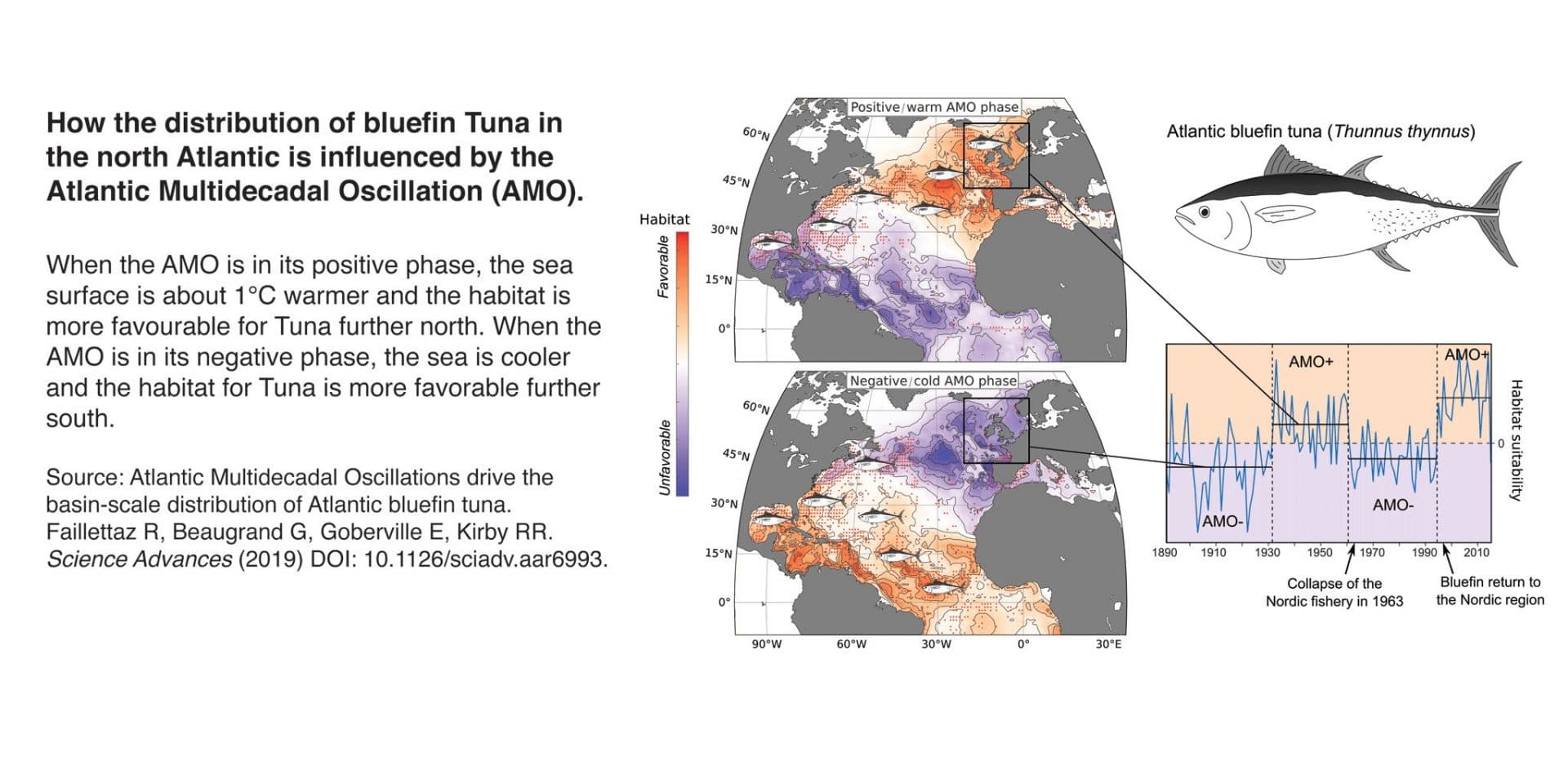
The Atlantic Multidecadal Oscillation affects complex atmospheric and oceanographic processes in the northern hemisphere including the strength and direction of ocean currents, drought on land, and even the frequency and intensity of Atlantic hurricanes. Approximately every 60 to 120 years the AMO switches between positive and negative phases to create a basin-scale shift in the distribution of Atlantic bluefin tuna. During a warm AMO phase, such as since the mid-1990s, bluefin tuna forage as far north as Greenland, Iceland and Norway and almost disappear from the central and south Atlantic. During its previous warm phase – at the middle of the 20th century – the North Sea had a bluefin tuna fishery that rivalled the Mediterranean and the Bluefin Tunny sportfishing club – known worldwide – was founded in Scarborough. However, during a cold AMO phase, such as that between 1963-1995, bluefin tuna move south and are more frequently found in the western, central, and even southern Atlantic, with few fish caught above 45°N. Dr Faillettaz says that “The ecological effects of the AMO have long been overlooked and our results represent a breakthrough in understanding the history of bluefin tuna in the North Atlantic.”
In fact, the most striking example of the effect of the AMO on bluefin tuna is the sudden collapse of the large Nordic bluefin tuna fishery in 1963. The collapse coincides perfectly with the most rapid known switch in the AMO from its highest to its lowest recorded value in only two years. After that switch tuna also vacated the North Sea, and the conditions remained unfavourable for bluefin tuna in the northern Atlantic until the late 1990s when it started to reappear around the UK.
The scientists expect that bluefin tuna will continue to migrate to the UK and North Sea waters every year until the AMO reverses to a cold phase. However, they also highlight that the additional effect of global warming on sea temperatures will make the future response of bluefin tuna to changes in the AMO uncertain. Further to the effect of the AMO on where and when bluefin tuna occur in the Atlantic, the study also found that this climatic oscillation influences their recruitment, i.e., how many juvenile bluefin tuna grow to become adults.
Dr Faillettaz said that “when water temperature increases during a positive AMO, bluefin tuna move further north. However, the most positive phases of the AMO also have a detrimental effect upon recruitment in the Mediterranean Sea, which is currently the most important spawning ground, and that will affect adult abundance a few years later. If the AMO stays in a highly positive phase for several years, we may encounter more bluefin tuna in our waters, but the overall population could actually be decreasing.”
Consequently, Dr Beaugrand warns that “global warming superimposed upon the AMO is likely to alter the now familiar patterns we have seen in bluefin tuna over the last four centuries. Increasing global temperatures may cause Atlantic bluefin tuna to persist in the Nordic region and shrink the species distribution in the Atlantic Ocean, and it may even cause the fish to disappear from the Mediterranean Sea, which is currently the most important fishery.”
Dr Goberville also raises another important observation saying that “because bluefin tuna are so noticeable, they are also an indicator of current temperature driven changes in our seas that are occurring throughout the marine food chain, from the plankton to fish and seabirds”.
The Atlantic bluefin tuna fishery indeed encompasses most of the problems seen in fisheries around the world, including fleet overcapacity and political mismanagement; the species’ distribution crosses exclusive economic zones and spans international, open-access waters (i.e. the entire North Atlantic, from the Mediterranean Sea to the Gulf of Mexico). Added to that, the long-term fluctuation in Atlantic bluefin tuna abundance was hitherto understood poorly, which represents a fundamental gap in this fish’s sustainable management.
Dr Kirby says that “we have shown why bluefin tuna occur when and where in the North Atlantic and what may influence their recruitment and abundance, and this is fundamental to understanding the management of a fish that is endangered due to overfishing. Bluefin tuna have been extensively overfished during the 20th century and the stock was close to its lowest in 1990, a fact that further indicates the recent changes in distribution are most likely environmentally driven rather than due to fisheries management and stock recovery.”
Before we further exploit bluefin tuna either commercially or recreationally for sport fishing, we should consider whether it would be better to protect them by making the UK’s seas a safe space for one of the ocean’s most endangered top fish.”
The lead author Dr Faillettaz concludes: “Our results demonstrate that local changes in Atlantic bluefin tuna abundance can reflect large-scale shifts in a species’ distribution that are unrelated to improvements or worsening of a stock’s abundance. In this context we hope that our study will highlight the need to consider the environment when planning the sustainable management of all migratory fish species.”
For further information
Dr Richard Kirby
E-mail: Richard.Kirby@planktonpundit.org
Dr Robin Faillettaz
E-mail: Robin.Faillettaz@univ-lille1.fr
For further reading
Could big-game fishing return to the UK?
Warming Seas linked to bluefin tuna surge in UK waters
Marine Life & Conservation Blogs
Creature Feature: Undulate Ray
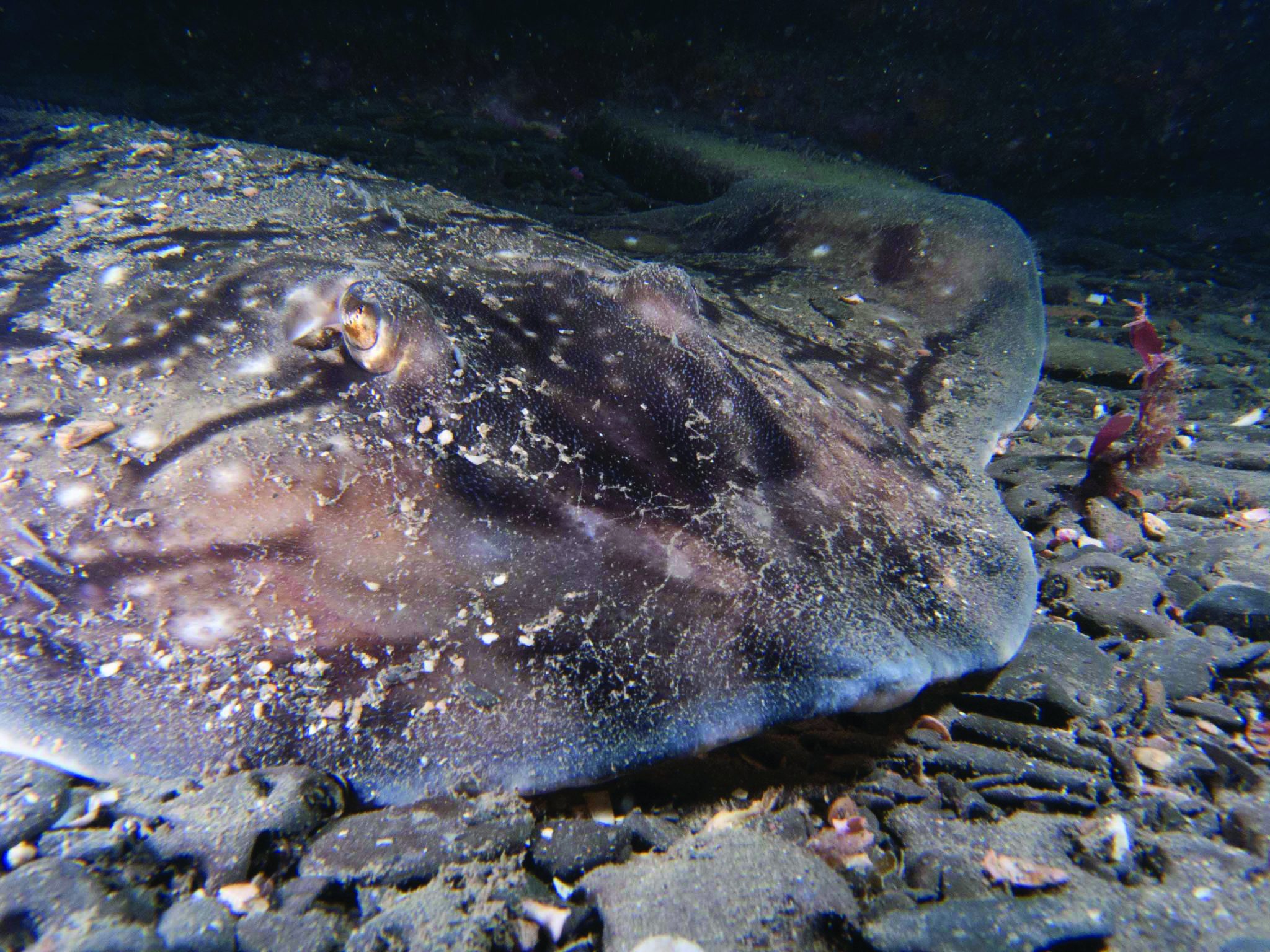
 In this series, the Shark Trust will be sharing amazing facts about different species of sharks and what you can do to help protect them.
In this series, the Shark Trust will be sharing amazing facts about different species of sharks and what you can do to help protect them.
This month we’re looking at the Undulate Ray. Easily identified by its beautiful, ornate pattern, the Undulate Ray gets its name from the undulating patterns of lines and spots on its dorsal side.
This skate is usually found on sandy or muddy sea floors, down to about 200 m deep, although it is more commonly found shallower. They can grow up to 90 cm total length. Depending on the size of the individual, their diet can range from shrimps to crabs.
Although sometimes called the Undulate Ray, this is actually a species of skate, meaning that, as all true skates do, they lay eggs. The eggs are contained in keratin eggcases – the same material that our hair and nails are made up of! These eggcases are also commonly called mermaid’s purses and can be found washed up on beaches all around the UK. If you find one, be sure to take a picture and upload your find to the Great Eggcase Hunt – the Shark Trust’s flagship citizen science project.
It is worth noting that on the south coasts, these eggcases can be confused with those of the Spotted Ray, especially as they look very similar and the ranges overlap, so we sometimes informally refer to them as ‘Spundulates’.
Scientific Name: Raja undulata
Family: Rajidae
Maximum Size: 90cm (total length)
Diet: shrimps and crabs
Distribution: found around the eastern Atlantic and in the Mediterranean Sea.
Habitat: shelf waters down to 200m deep.
Conservation Status : As a commercially exploited species, the Undulate Ray is a recovering species in some areas. The good thing is that they have some of the most comprehensive management measures of almost any elasmobranch species, with both minimum and maximum landing sizes as well as a closed season. Additionally, targeting is entirely prohibited in some areas. They are also often caught as bycatch in various fisheries – in some areas they can be landed whilst in others they must be discarded.
IUCN Red List Status: Endangered
For more great shark information and conservation visit the Shark Trust Website
Image Credits: Banner – Sheila Openshaw; Illustration – Marc Dando
Blogs
Guarding Against Coral Invaders
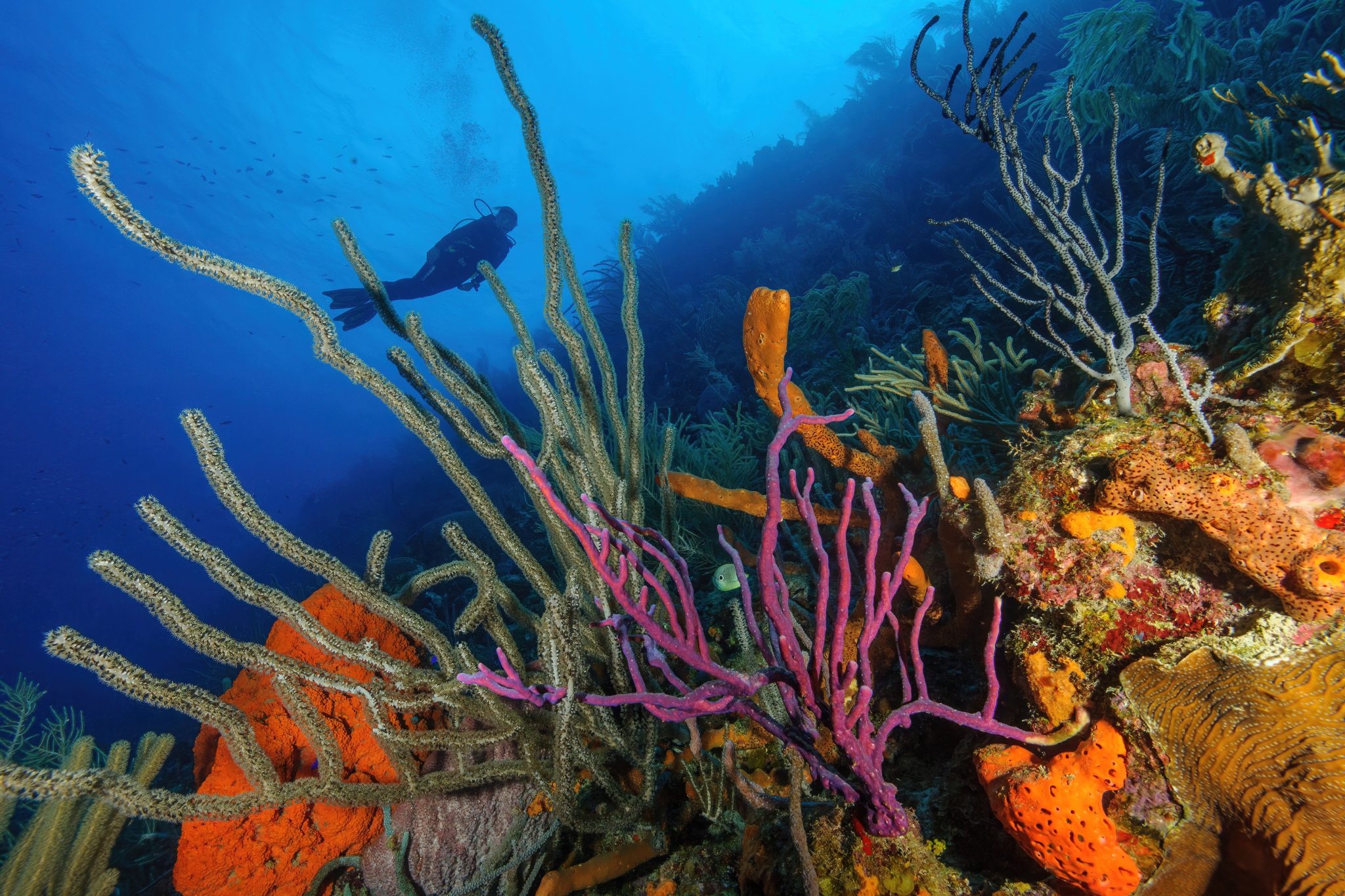
Protecting (Dutch) Caribbean Reefs from Unomia stolonifera
Recent reports highlight the concerning spread of the invasive soft coral, Unomia stolonifera, currently devastating Venezuela’s marine ecosystems and detected in Cuba. With the potential threat of its expansion to the (Dutch) Caribbean islands, urgent action and awareness are essential to safeguard marine biodiversity and local economies from possible catastrophic consequences.
Invasive species are animals or plants from another region of the world that don’t belong in their new environment. These species can have major ecological effects by decimating native flora or fauna. They can also cause large economic losses and impact human health. Invasive species also pose a significant threat to marine ecosystems worldwide, including the Dutch Caribbean. Among these invaders is the octocoral species Unomia stolonifera or “Pulsing Xenia”, originally from the Indo-Pacific. With its rapid growth and lack of natural predators, this species can outcompete native species and disrupt fragile marine habitats such as seagrass beds and coral reefs.
Background
The invasive soft coral U. stolonifera was first identified in 2014, off the coast of Venezuela. It is believed to have been introduced via the illegal aquarium trade. Since this species can reproduce sexually and asexually (or fragment), even small pieces can regenerate to spread. Once introduced it quickly took over shallow reefs and hard substrate at depths of 0-50 meters, outcompeting local corals and seagrass for space. Follow on surveys found that this coral species exhibited average percentage cover as high as 80%, vastly outcompeting native corals. In highly colonized areas, fish are disappearing due to loss of habitats.
In 2022, during a survey conducted in Cuba by the University of Havana, an unknown octocoral was discovered which was later identified as the invasive Unomia stolonifera. It is suspected that the coral larvae arrived in ballast water from fossil fuel ships originating from Venezuela, as nearby sites adjacent to Venezuelan ports have been heavily affected by the invasion.
How to help
Prevention through continuous monitoring, particularly in high-risk areas such as marine harbors and oil facilities, is paramount. Early detection plays a pivotal role in mitigating the threat posed by Unomia stolonifera.
The public’s involvement and awareness are also vital. Local communities, recreational divers, tourists, and all stakeholders are urged to participate in early detection efforts by reporting sightings (photo, location and date) of this invasive coral to their respective Protected Area Management Organization (PMO’s)- the Fundacion Parke Nacional Aruba (FPNA), STINAPA Bonaire, CARMABI Curaçao , Saba Conservation Foundation (SCF), Nature Foundation St. Maarten (NFSXM) and St. Eustatius National Parks (STENAPA). If an invaded area is confirmed, follow the recommendations by the local PMO’s.
Keys to Success
Despite the challenges, early detection is key to mitigating the threat posed by Unomia stolonifera. With continued vigilance, research, and community engagement, there is hope for containing this potential issue before it becomes a major threat.
About the DCNA
The Dutch Caribbean Nature Alliance (DCNA) supports (science) communication and outreach in the Dutch Caribbean region by making nature related (scientific) information more widely available through amongst others the Dutch Caribbean Biodiversity Database, DCNA’s news platform BioNews and through the press. This article contains the results from several scientific studies but the studies themselves are not DCNA studies. No rights can be derived from the content. DCNA is not liable for the content and the in(direct) impacts resulting from publishing this article.
-
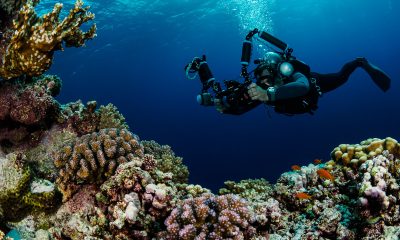
 News3 months ago
News3 months agoHone your underwater photography skills with Alphamarine Photography at Red Sea Diving Safari in March
-
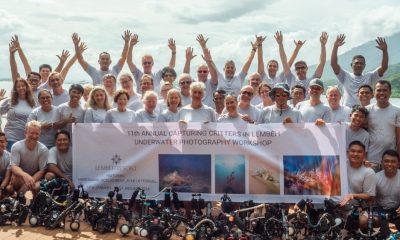
 News2 months ago
News2 months agoCapturing Critters in Lembeh Underwater Photography Workshop 2024: Event Roundup
-
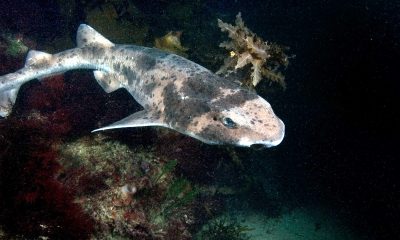
 Marine Life & Conservation Blogs2 months ago
Marine Life & Conservation Blogs2 months agoCreature Feature: Swell Sharks
-

 Blogs1 month ago
Blogs1 month agoMurex Resorts: Passport to Paradise!
-
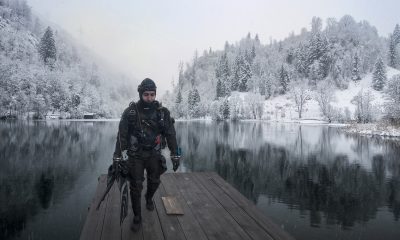
 Gear News3 months ago
Gear News3 months agoBare X-Mission Drysuit: Ideal for Both Technical and Recreational Divers
-
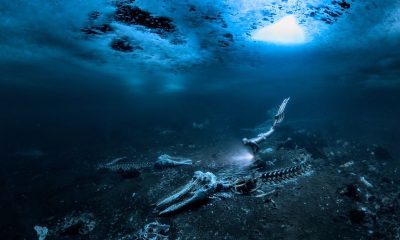
 Blogs2 months ago
Blogs2 months agoDiver Discovering Whale Skeletons Beneath Ice Judged World’s Best Underwater Photograph
-

 Gear Reviews2 months ago
Gear Reviews2 months agoGear Review: Oceanic+ Dive Housing for iPhone
-
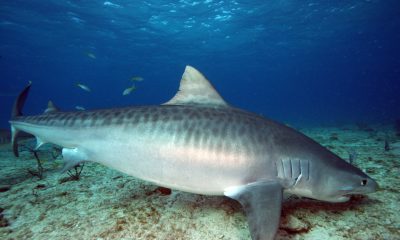
 Blogs3 months ago
Blogs3 months agoThe Thrilling Encounter with Tiger Sharks at Beqa Lagoon’s ‘The Colosseum’ with Coral Coast Divers



